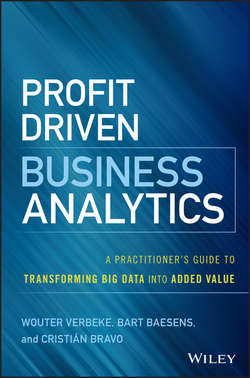Читать книгу Profit Driven Business Analytics - Baesens Bart - Страница 10
На сайте Литреса книга снята с продажи.
CHAPTER 1
A Value-Centric Perspective Towards Analytics
ANALYTICAL MODEL EVALUATION
ОглавлениеBefore adopting an analytical model and making operational decisions based on the obtained clusters, rules, patterns, relations, or predictions, the model needs to be thoroughly evaluated. Depending on the exact type of output, the setting or business environment, and the particular usage characteristics, different aspects may need to be assessed during evaluation in order to ensure the model is acceptable for implementation.
A number of key characteristics of successful analytical models are defined and explained in Table 1.7. These broadly defined evaluation criteria may or may not apply, depending on the exact application setting, and will have to be further specified in practice.
Table 1.7 Key Characteristics of Successful Business Analytics Models
Various challenges may occur when developing and implementing analytical models, possibly leading to difficulties in meeting the objectives as expressed by the key characteristics of successful analytical models discussed in Table 1.7. One such challenge may concern the dynamic nature of the relations or patterns retrieved from the data, impacting the usability and lifetime of the model. For instance, in a fraud detection setting, it is observed that fraudsters constantly try to out-beat detection and prevention systems by developing new strategies and methods (Baesens et al. 2015). Therefore, adaptive analytical models and detection and prevention systems are required in order to detect and resolve fraud as soon as possible. Closely monitoring the performance of the model in such a setting is an absolute must.
Another common challenge in a binary classification setting such as predicting customer churn concerns the imbalanced class distribution, meaning that one class or type of entity is much more prevalent than the other. When developing a customer churn prediction model typically many more nonchurners are present in the historical dataset than there are churners. Furthermore, the costs and benefits related to detecting or missing either class are often strongly imbalanced and may need to be accounted for to optimize decision making in the particular business context. In this book, various approaches are discussed for dealing with these specific challenges. Other issues may arise as well, often requiring ingenuity and creativity to be solved. Hence, both are key characteristics of a good data scientist, as is discussed in the following section.
